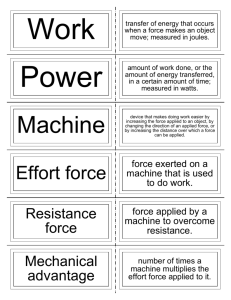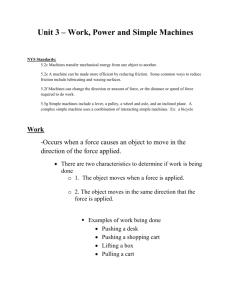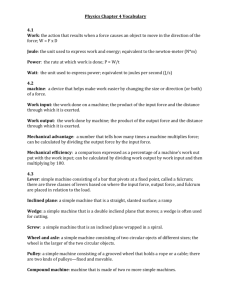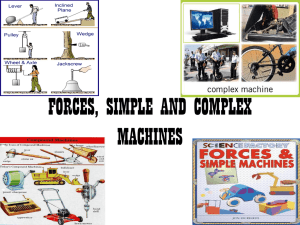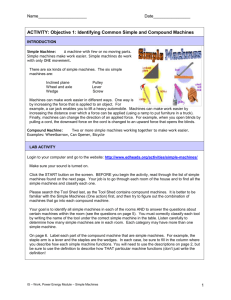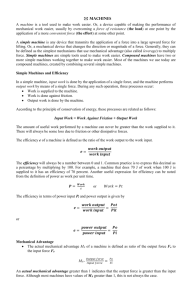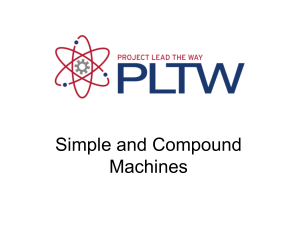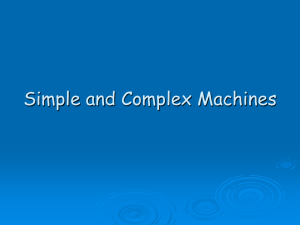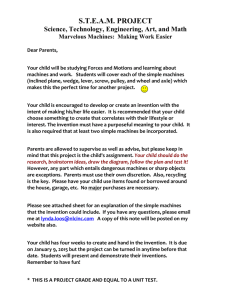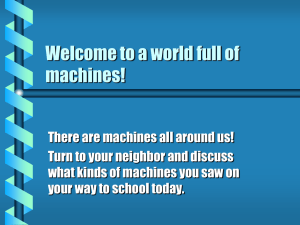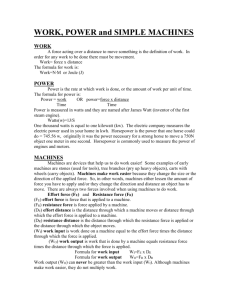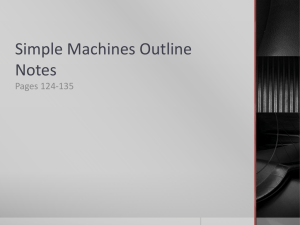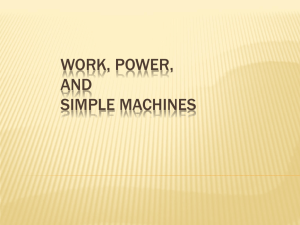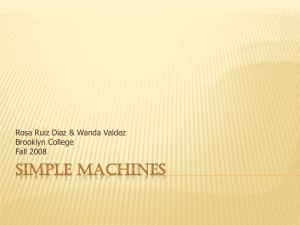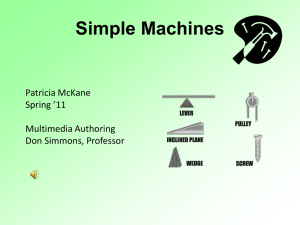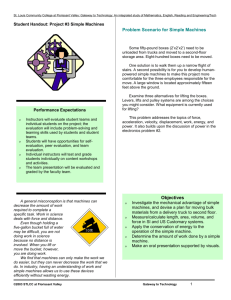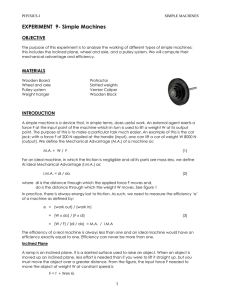Simple Machines Answers
advertisement
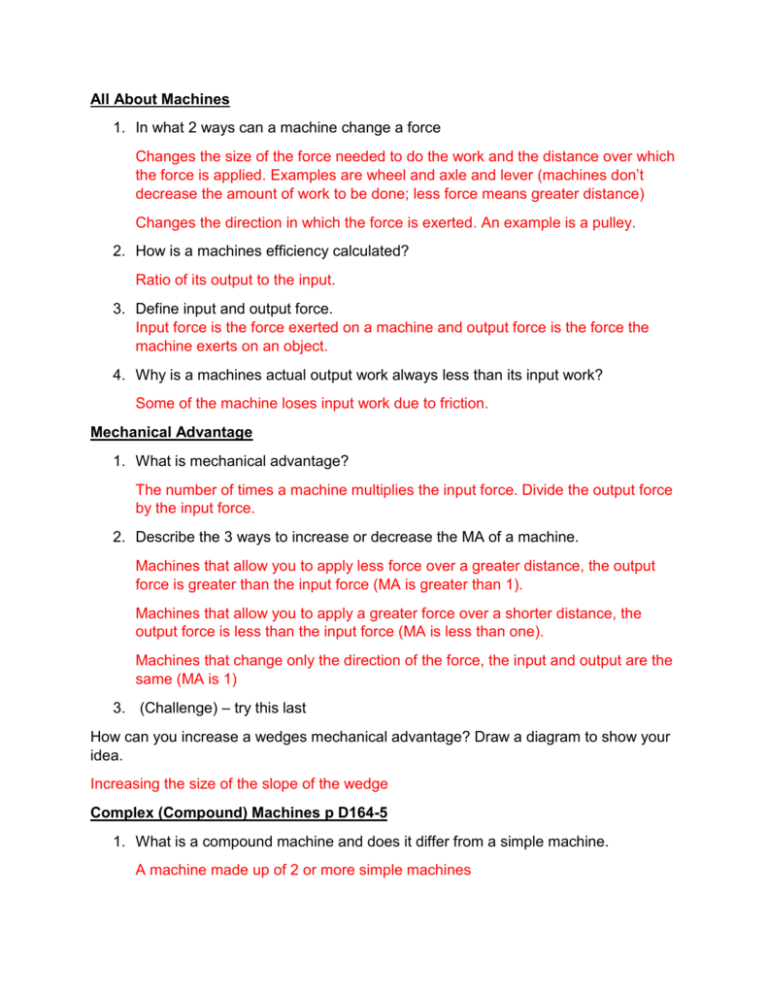
All About Machines 1. In what 2 ways can a machine change a force Changes the size of the force needed to do the work and the distance over which the force is applied. Examples are wheel and axle and lever (machines don’t decrease the amount of work to be done; less force means greater distance) Changes the direction in which the force is exerted. An example is a pulley. 2. How is a machines efficiency calculated? Ratio of its output to the input. 3. Define input and output force. Input force is the force exerted on a machine and output force is the force the machine exerts on an object. 4. Why is a machines actual output work always less than its input work? Some of the machine loses input work due to friction. Mechanical Advantage 1. What is mechanical advantage? The number of times a machine multiplies the input force. Divide the output force by the input force. 2. Describe the 3 ways to increase or decrease the MA of a machine. Machines that allow you to apply less force over a greater distance, the output force is greater than the input force (MA is greater than 1). Machines that allow you to apply a greater force over a shorter distance, the output force is less than the input force (MA is less than one). Machines that change only the direction of the force, the input and output are the same (MA is 1) 3. (Challenge) – try this last How can you increase a wedges mechanical advantage? Draw a diagram to show your idea. Increasing the size of the slope of the wedge Complex (Compound) Machines p D164-5 1. What is a compound machine and does it differ from a simple machine. A machine made up of 2 or more simple machines 2. What are examples of compound machines? Draw pictures for each. Scissors, wheelbarrow, fishing rod, gears 3. Explain the mechanical advantage of a compound machine? It is equal to the product of the mechanical advantages of all of the simple machines that make up the compound machine. Types of Machines D154-159 In at LEAST 3 SENTENCES a piece, explain all 6 types of simple machines and draw a picture. Lever: a solid bar that rotates, or turns, around a fixed point (fulcrum). Can multiply and change the direction of the input force. You apply the force down on one end and the other end lifts a load. Three classes of levers. Examples: Rake, broom, crowbar Wheel and Axle: Made of a wheel attached to a shaft, or axle. Turning the wheel transfers the input force to the axle. Turning the axle transfers the force to the wheel. Examples: bicycles, car, doorknobs, steering wheels, electric fans, screwdrivers Pulley: wheel with a grooved rim and a rope or cable that rides in the groove. As you pull on the rope, the wheel turns. Fixed pulley, moveable pulley, block and tackle (combo of both types). Examples are the flagpole and blinds. Inclined Plane: A sloping surface. These make the work of raising an object easier because they support part of the weight of the object while it is being moved from one level to another. The less steep the ramp, the less force is needed to move the object over a longer distance. An example of a ramp. Wedge: Has a thick and a thin end. It is used to cut, split, or pierce an object, or to hold objects together. This is a type of inclined plane. Thin wedges have small angles and need less input force to cut than thick wedges with larger angles. Examples are a doorstop, a chisel, an ice scraper, an axe, and a knife. Screw: An inclined plane wrapped around a cylinder or cone to form a spiral. Used to raise or lower weights or to fasten objects. Threads that are closer together require less force but more times. Examples are drills, jar lids, screws, nuts and bolts.

